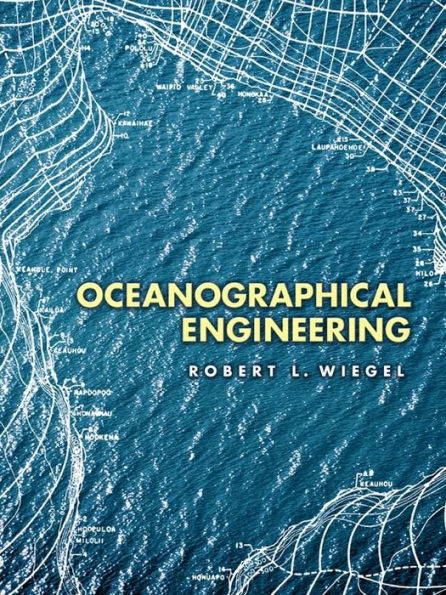Oceanographical Engineering
As is the case with many modern fields of study, oceanographical engineering cuts across the boundaries of several disciplines. Like other scientific endeavors, it aims to understand the nature of the ocean and to make use of this understanding for the benefit of humanity through better ports, safer and more economical operations at sea, and greater use of the oceans' natural resources--food, raw materials, and recreation.
This graduate-level text requires a knowledge of fluid mechanics; a background in the motions of sediments in fluids is advisable, as is a concurrent course in structural dynamics. Topics include the theory of periodic waves; tsunamis, storm surges, and harbor oscillations; the effect of structures on waves; waves in shoaling water; tides and sea level changes; currents; shores and shore processes; some characteristics of the oceans' waters; moorings; and other related subjects. Certain portions of the book pertaining to the distribution of temperatures and salinities in the ocean are largely descriptive; other portions, such as the sections on waves, are mathematical. Numerous drawings and photographs supplement the text.
1000732928
This graduate-level text requires a knowledge of fluid mechanics; a background in the motions of sediments in fluids is advisable, as is a concurrent course in structural dynamics. Topics include the theory of periodic waves; tsunamis, storm surges, and harbor oscillations; the effect of structures on waves; waves in shoaling water; tides and sea level changes; currents; shores and shore processes; some characteristics of the oceans' waters; moorings; and other related subjects. Certain portions of the book pertaining to the distribution of temperatures and salinities in the ocean are largely descriptive; other portions, such as the sections on waves, are mathematical. Numerous drawings and photographs supplement the text.
Oceanographical Engineering
As is the case with many modern fields of study, oceanographical engineering cuts across the boundaries of several disciplines. Like other scientific endeavors, it aims to understand the nature of the ocean and to make use of this understanding for the benefit of humanity through better ports, safer and more economical operations at sea, and greater use of the oceans' natural resources--food, raw materials, and recreation.
This graduate-level text requires a knowledge of fluid mechanics; a background in the motions of sediments in fluids is advisable, as is a concurrent course in structural dynamics. Topics include the theory of periodic waves; tsunamis, storm surges, and harbor oscillations; the effect of structures on waves; waves in shoaling water; tides and sea level changes; currents; shores and shore processes; some characteristics of the oceans' waters; moorings; and other related subjects. Certain portions of the book pertaining to the distribution of temperatures and salinities in the ocean are largely descriptive; other portions, such as the sections on waves, are mathematical. Numerous drawings and photographs supplement the text.
This graduate-level text requires a knowledge of fluid mechanics; a background in the motions of sediments in fluids is advisable, as is a concurrent course in structural dynamics. Topics include the theory of periodic waves; tsunamis, storm surges, and harbor oscillations; the effect of structures on waves; waves in shoaling water; tides and sea level changes; currents; shores and shore processes; some characteristics of the oceans' waters; moorings; and other related subjects. Certain portions of the book pertaining to the distribution of temperatures and salinities in the ocean are largely descriptive; other portions, such as the sections on waves, are mathematical. Numerous drawings and photographs supplement the text.
44.95
In Stock
5
1

Oceanographical Engineering
544
Oceanographical Engineering
544
44.95
In Stock

Product Details
| ISBN-13: | 9780486160191 |
|---|---|
| Publisher: | Dover Publications |
| Publication date: | 09/03/2013 |
| Series: | Dover Civil and Mechanical Engineering |
| Sold by: | Barnes & Noble |
| Format: | eBook |
| Pages: | 544 |
| File size: | 71 MB |
| Note: | This product may take a few minutes to download. |
From the B&N Reads Blog
